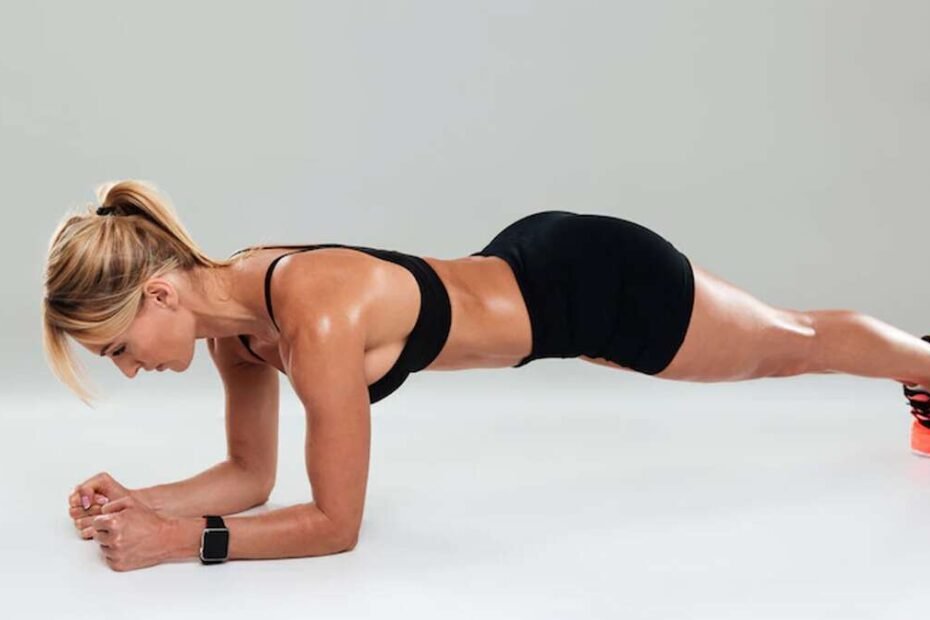The plank is a core-strengthening exercise that has become a staple in fitness routines worldwide for its ability to engage multiple muscle groups and improve core stability. In this guide, we will explore the primary and secondary muscles worked during the plank, how to perform it correctly, common mistakes to avoid, and variations to challenge your core even further.
Muscles Worked
Primary Muscles Targeted:
- Rectus Abdominis (Front abdominal muscles)
- Transverse Abdominis (Deep core stabilizing muscles)
- Obliques (Internal and external, on the sides of the torso)
- Erector Spinae (Muscles along the spine)
- Hip Muscles (Including glutes and hip flexors)
Secondary Muscles Engaged:
- Shoulders (Deltoids and trapezius muscles)
How to Do the Plank Exercise
Follow these steps to perform a basic forearm plank correctly:
- Starting Position: Begin on the floor in a prone position. Place your forearms on the ground, with your elbows directly below your shoulders. Your arms should be parallel to your body.
- Body Alignment: Extend your legs behind you, keeping them hip-width apart. Your toes should be tucked under, and your body should form a straight line from head to heels.
- Engage Your Core: Tighten your core muscles, drawing your navel toward your spine. Ensure your hips are level with your shoulders, and your back remains flat.
- Hold the Plank: Maintain this position, holding it for as long as you can while keeping proper form. Aim for at least 20-30 seconds as a starting point and gradually increase your time as you build strength.
- Breathe: Remember to breathe steadily throughout the exercise. Avoid holding your breath.
- Release: When you can no longer maintain proper form or feel fatigued, gently lower your knees to the ground to release the plank.
Common Mistakes to Avoid
To get the most out of your plank exercise and prevent injury, avoid these common mistakes:
- Dropping Hips: Keep your hips in line with your shoulders. Avoid allowing your hips to sag toward the ground or lifting them too high.
- Protruding Neck: Keep your neck in a neutral position, aligning it with your spine. Avoid looking up or letting your head drop.
- Holding Your Breath: Maintain a steady breathing pattern throughout the exercise. Holding your breath can lead to muscle tension and reduced endurance.
- Overarching Lower Back: Avoid excessive arching in your lower back by engaging your core muscles and maintaining a flat back.
- Neglecting Proper Form: Focus on form over duration. It’s better to hold a correct plank for a shorter time than to compromise form for a longer hold.
Variations
Once you have mastered the basic plank, you can challenge your core further with these variations:
- Side Plank: Balance on one forearm and the side of one foot while keeping your body in a straight line. This targets the oblique muscles.
- High Plank: Perform the plank on your hands, similar to a push-up position.
- Plank with Leg Lift: Lift one leg off the ground while holding the plank position. Alternate between legs.
- Plank with Shoulder Taps: While in a plank position, tap your opposite shoulder with your hand.
- Forearm Plank on an Exercise Ball: Place your forearms on an exercise ball to increase instability and engage more muscles.
Alternatives
If you’re looking to change up your core workout, consider these alternative exercises:
- Crunches: Target the upper and lower abdominal muscles.
- Russian Twists: Focus on the obliques and improve rotational strength.
- Leg Raises: Engage the lower abdominal muscles for a strong core.
- Bicycle Crunches: Work on both the rectus abdominis and obliques while adding a dynamic element.
Incorporate planks and their variations into your regular workout routine to build core strength, improve stability, and enhance your overall fitness. Whether you’re a beginner or an advanced fitness enthusiast, the plank offers a versatile and effective way to strengthen your core muscles and achieve a more robust and balanced physique.
